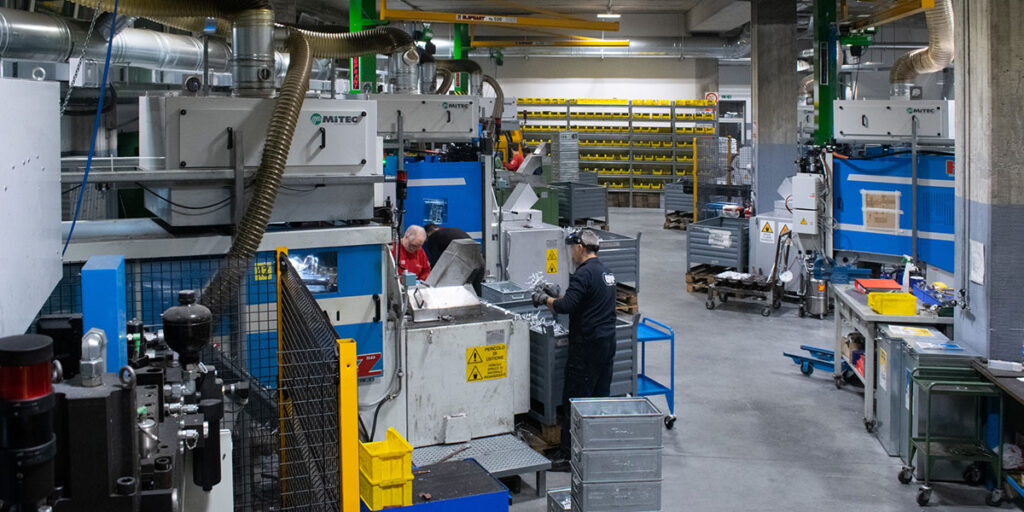Experience and high technology for increasingly green production

Zamak is an alloy consisting of zinc, aluminium, magnesium and copper. The name is an acronym of the German names for the metals making it up: Zink (zinc), Aluminium, Magnesium and Kupfer (copper). Working this alloy is done by a process of die casting. The zamak is melted and then injected into a sealed mould. This method allows us to obtain complex shapes with excellent tolerances.
Its use has many advantages: from greater resistance to impact and wear compared to other alloys, to the greater precision of the moulded items which can simplify downstream processes. With zamak, pieces can be produced of the smallest – as well as the largest – dimensions, with very sophisticated surfaces, with costs significantly lower compared to other materials. In addition, zamak has a low environmental impact. It is completely recyclable and contains no lead; in working it, no polluting residues are dispersed; it has a low melting point (around 400°C) and, therefore, allows significant energy savings to be achieved.
The in-house Euro Stampaggi Group’s Zamak Die Casting department was established in 2012, starting out with experimentation and prototypes for long-standing customers. Today it has seven production lines with thirty operators divided into three departments (technical office, mould area, foundry). Modern machinery (some completely robotic) of various tonnages allow the moulding of tiny, 1-gramme pieces up to pieces weighing over 1 kilo.
The experience of the operators and the high technology machinery used allow quality control to become an essential requirement. Indeed, checks are done on the raw materials, feasibility checks are done on the design or sample, checks are carried out through every production phase, with various methods and tools, and final checks are done on batches in production.
